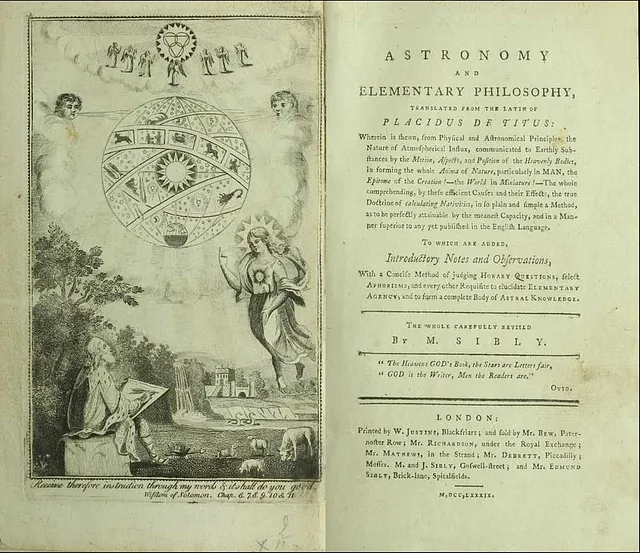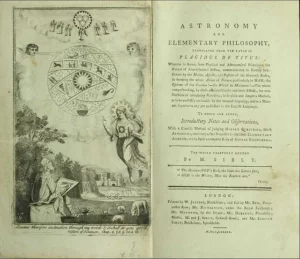
OTHER NAMES OF PLACIDO SYSTEM: Domification of the hourly circles
WHO WAS PLACIDO TITI, THE ASTRONOMER THAT DEVELOPED THIS METHOD?
Placido Titi (1603–1668) was an Italian Christian monk and astronomer of the Olivetan order, professor of mathematics, physics and astronomy at the University of Pavia from 1657 until his death.
He lived and worked in Milan, that at that time was ruled by the family Habsburgs of Spain. He worked especially for the Archduke Leopold Wilhelm of Austria, who had a strong interest in the science of alchemy and astrology, and Placido (Placid) Titi dedicated his studies about astrological houses to him.
Placido Titi made the domification (house) system famous, known as the Placidian system, which is nowadays used by modern astrology. He did not invent the method, but he learned it from the Jewish astrologer Abraham Ibn Ezra as the system employed by Ptolemy, an attribution which was accepted by Placidus.
Among the followers of Placido Titi’s School there was the famous mathematician Gerolamo Vitali, who taught his methods.
THE HISTORICAL ORIGINS OF PLACIDO SYSTEM
This method is based on the ancient method of dividing the diurnal and nocturnal phases of the day into twelve hours.
PTOLEMY, THE FATHER OF WESTERN ASTROLOGY
The day and night phases are only equivalent to the equinoxes and depend on the latitude of the place. Although there are no technical instructions in the book “Tetrabiblos” about the method of house-making, the astronomist and mathematician Ptolemy describes, without a shadow of a doubt, the use of houses; furthermore, the indications regarding the times of ascension, the temporal hours and other elements lead us to deduce that the “Placidian” method could easily be the method he used to divide the quadrants of the local sphere. The fact that he does not go into the details of the technique suggests that this method is prior to him and widely known.
However, the Placido method has ancient origins: authoritative opinions trace the first traces of this method to the Greek astronomer and astrologer Hipparchus of Nicaea (2nd century BC), compiler of a star catalog with 800 stars; he is credited with discovering the phenomenon of the precession of the equinoxes.
ARABIC ASTROLOGY
In the Arabic treatise, “El-Andalus”, we find various methods of using the astrolabe attributed to Ptolemy. It is an Arab author, Ibn al-Samh (1035), who recognizes the paternity of this method to Ptolomeo de Habas (9th century AD). Even Ibn ‘Ezra (Jewish author of neo-Platonic philosophical works and astrologer — 1092/1167) in his “Liber de rationibus tabularum” describes a method of domification which is none other than that of Titi.
Nowadays it is generally attributed to the Olivetan monk Placido Titi. Born in Nonantola (Mo) in 1603, died in 1668.
Placido Titi was an advocate of the need for a return to the purity of astrological-mathematical (Ptolemy), philosophical (Aristotle) and medical (Galen) knowledge.
Placido Titi rejected the “occult qualities of the stars but not the principle of authority” stating that “the stars cannot be signs of events if they are not their cause”. He tried to purge Astrology by bringing it back to the study of the law of cause and effect and deepening its mathematical and astronomical bases. From 1657 to 1668, the year of his death, he taught at the University of Pavia. Although it is now clear that he was not the inventor of the method ascribed to him, he deserves credit for having developed the domification tables that favored its diffusion.
Returning to the presumed paternity of the method, it is known that, before Titi, Girolamo Diedo (1535–1615), a Venetian mathematician who dedicated himself to astrology, mentioned the Placidian method. This was also done by Giuseppe Scaligero (1540–1609), a French philologist of Italian origin, in one of his translations of Manilius’s “Astronomica” (Strasbourg 1600). Scaliger was able to read almost any classical text, knowing Latin, Greek, Hebrew and Arabic. It was he himself who stated, in those notes, that this method had much older origins.
PLACIDO SYSTEM IN LAST CENTURIES
In the 17th century the Placidian method found particular acceptance in England, even if some great astrologers such as Lilly, Gadbury and others opposed its use. Instead, it was thanks to the enthusiastic support of another English astrologer, Partridge, that the tables were published and achieved easier dissemination. It was precisely because of the success of the method in “Protestant” England that Placido’s work was banned in 1687 by the censors of the Catholic church. Later Placido’s book (“Primum Mobile”) was translated by Manoah Sibly (1789) and John Cooper (1814). With the Tables of the Houses according to Placid domification, published by Rafael, and J.Wilson’s text “Dictionary of Astrology” (1819), the success of this method was consolidated in England and Europe. Then in the 20th century, thanks to the popularization of a method of equatorial directions, called Ptolemy-Placido World Directions, many astrologers switched to the Placidian method.
Learn more in my next article about the technique of this Domification System: how it works?
Giulia Maria Miscioscia

